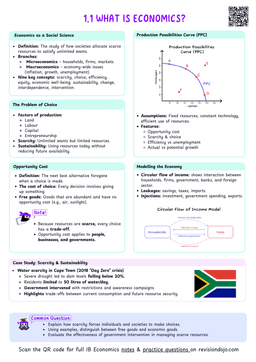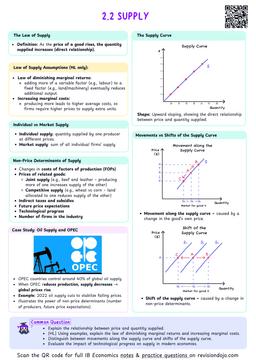Societal/community surplus maximised at equilibrium
Social surplus
The sum of consumer surplus and producer surplus. Maximised in the free market, when the market operates at its equilibrium point.

Figure 1a above illustrates how the social (or community surplus) is maximized when the market operates at equilibrium. This is because:
- The consumer and producer surplus are maximised at $P_e$, $Q_e$.
- This is evidenced by the fact that area of the social surplus at equilibrium is the largest it can be (at that $P_e$ and $Q_e$).
Consider now the market price is $P_1$ instead of $P_e$ (Figure 1b):
- At this point, producers are only wiling and able to supply a quantity $Q_1$.
- Therefore, all the quantities from $Q_1$ to $Q_e$, which would have been produced if the market was operating at equilibrium ($P_e$, $Q_e$), are now not being produced.
- Hence, society is losing out on the social surplus from $Q_1$ to $Q_e$ that it would have benefited from if the market produced at $Q_e$.
- Resultantly, the area of the social surplus is now smaller than the social surplus when the market operates at equilibrium.
- This shows how social surplus is maximised when the market operates at equilibrium.
The loss in the social surplus in Figure 1b is referred to as the welfare loss.
Welfare loss
The reduction in social surplus that occurs when marginal social benefits (MSB) are not equal to marginal social costs (MSC), typically as a result of market failure.
- The welfare loss can be understood as the loss of societal benefit for not operating at the equilibrium price.
- Since equilibrium ensures allocative efficiency, social surplus is maximized and no welfare loss exists at that point..
Welfare loss will be further discussed in (2.8).
Allocative efficiency: marginal benefit equals marginal cost
Allocative efficiency
Allocative Efficiency
State of the economy in which the combination and quantity of goods and services produced is aligned with the preferences of consumers and producers, maximising social surplus.
Allocative efficiency allocates scarce resources in a way that maximises the benefits that society gets from consuming them. This occurs in a market when:
- The marginal benefits of consumers equal the marginal costs of producers.
- Social surplus is maximised.


